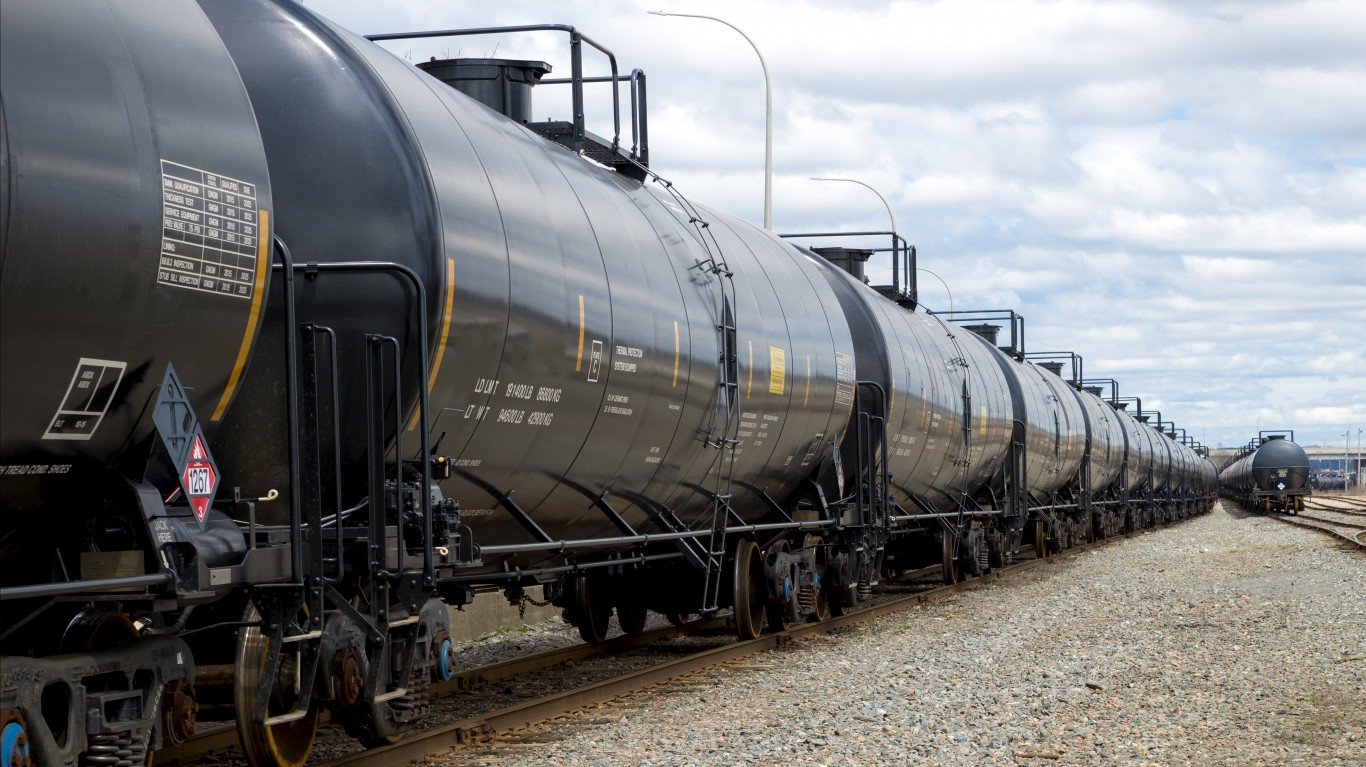

Crude oil prices spiked by around 20% over the weekend following the drone attack on Saudi Arabia’s Abqaiq crude processing plant. It could have been worse.
High global crude oil stockpiles may be the single biggest reason that OPEC and its partners have been cutting production. The producers want to drain those stockpiles, forcing consuming nations to bid up prices for current production. Among the developed nations of the Organisation for Economic Co-operation and Development (OECD), stockpiles are required to be equal to 90 days of consumption.
If the outage at Abqaiq exceeds three or four weeks, prices could rise further. The price of Brent crude for immediate delivery was up more than 9% in London at $66.27 a barrel on Monday, while West Texas Intermediate (WTI) for immediate delivery traded up about 9.7% at $60.16. Looking further into the future, though, shows WTI prices up about half as much and Brent prices up by about 6.8%.
Those futures contracts indicate two things: the price of crude will come down as the damage to Abqaiq is repaired and Brent prices are going to retreat more slowly. In the United States, oil and gas exploration and production companies are getting big boosts to their share prices as investors see these companies benefitting from constrained global supply.
Here 10 companies that saw share prices soar in early trading Monday.
Whiting Petroleum Corp. (NYSE: WLL) closed at $7.54 on Friday and traded up about 42.4% to $10.74, in a 52-week range of $6.00 to $55.17.
Extraction Oil & Gas Inc. (NASDAQ: XOG) closed at $3.23 on Friday and traded up about 26.6% to $4.09, in a 52-week range of $3.04 to $11.82.
Continental Resources Inc. (NYSE: CLR) closed at $32.14 on Friday and traded up about 13% to $36.34, in a 52-week range of $27.54 to $71.95.
Chesapeake Energy Inc. (NYSE: CHK) closed at $1.78 on Friday and traded up about 12.4%, at $2.00 in a 52-week range of $1.26 to $4.98.
Carrizo Oil & Gas Inc. (NASDAQ: CRZO) closed at $8.55 on Friday and traded up about 10.4%, at $9.44 in a 52-week range of $7.45 to $26.67.
Apache Corp. (NYSE: APA) closed at $24.34 on Friday and traded up about 9.3% to $26.59. The 52-week range is $25.86 to $50.03.
Marathon Oil Corp. (NYSE: MRO) closed at $12.70 on Friday and traded up about 8% to $13.72, in a 52-week range of $11.39 to $24.20.
Devon Energy Inc. (NYSE: DVN) closed at $25.07 on Friday, and it traded up about 7.3% to $26.89. The 52-week range is $20.37 to $41.94.
ConocoPhillips (NYSE: COP) closed at $57.34 on Friday and traded up about 6.6%, at $61.10 in a 52-week range of $50.13 to $80.24.
Southwestern Energy Co. (NYSE: SWN) closed at $2.23 on Friday and traded up about 6% to $2.37, in a 52-week range of $1.56 to $6.23.
Supermajors Exxon Mobil Corp. (NYSE: XOM) and Chevron Corp. (NYSE: CVX) both traded up by a more modest 1.5% early Monday.
There are a few things to notice about these big price boosts. First, share prices for all these firms remain nearer to their 52-week lows than to their 52-week highs. It’s been a miserable year for most of them, and more than one big price spike will be needed to recover all the lost ground.
Second, capital expenditures have been cut in order to allow the companies to keep generating investor returns, and even if new wells could come online quickly enough, U.S. pipeline capacity out of the nation’s biggest producing fields is at or near its limits. Monday’s spiking prices do not reflect any growth in production, just higher prices for current production. Higher prices are likely to be only a short-term phenomenon.
Third, even if more production were magically to occur in the next few weeks, and even if the pipeline capacity were available, President Trump already has said the federal government stands ready to release oil from the Strategic Petroleum Reserve (SPR), which has a 600-million barrel stockpile. Those barrels and the president’s determination to keep gasoline pump prices down are conspiring against higher share prices for producers.
Fourth, even if U.S. producers could get oil to export facilities along the Gulf Coast, U.S. export capacity is already jammed up. Industry analysts at Orbital Insight put it this way:
It is critical to note that U.S. export infrastructure is maxed out and investor concerns around shale profitability are causing drilling slowdowns. The result is that regardless of an SPR release, the U.S. will be hard-pressed to export any additional oil into the world market. An SPR release would allow some U.S. import rejection, freeing oil to be purchased on global markets, much of which will not be positioned to reach key consumers in a timely way.
Finally, don’t discount entirely the fact that the drone attack offers a good opportunity for a short squeeze.
All this said, the scary thing about the attack on Abqaiq is that it demonstrates just how easy (and cheap) it is to wreak havoc on the world’s largest, and arguably most important, commodity market. That risk is likely to be priced in from now on.
Thank you for reading! Have some feedback for us?
Contact the 24/7 Wall St. editorial team.
 24/7 Wall St.
24/7 Wall St.

